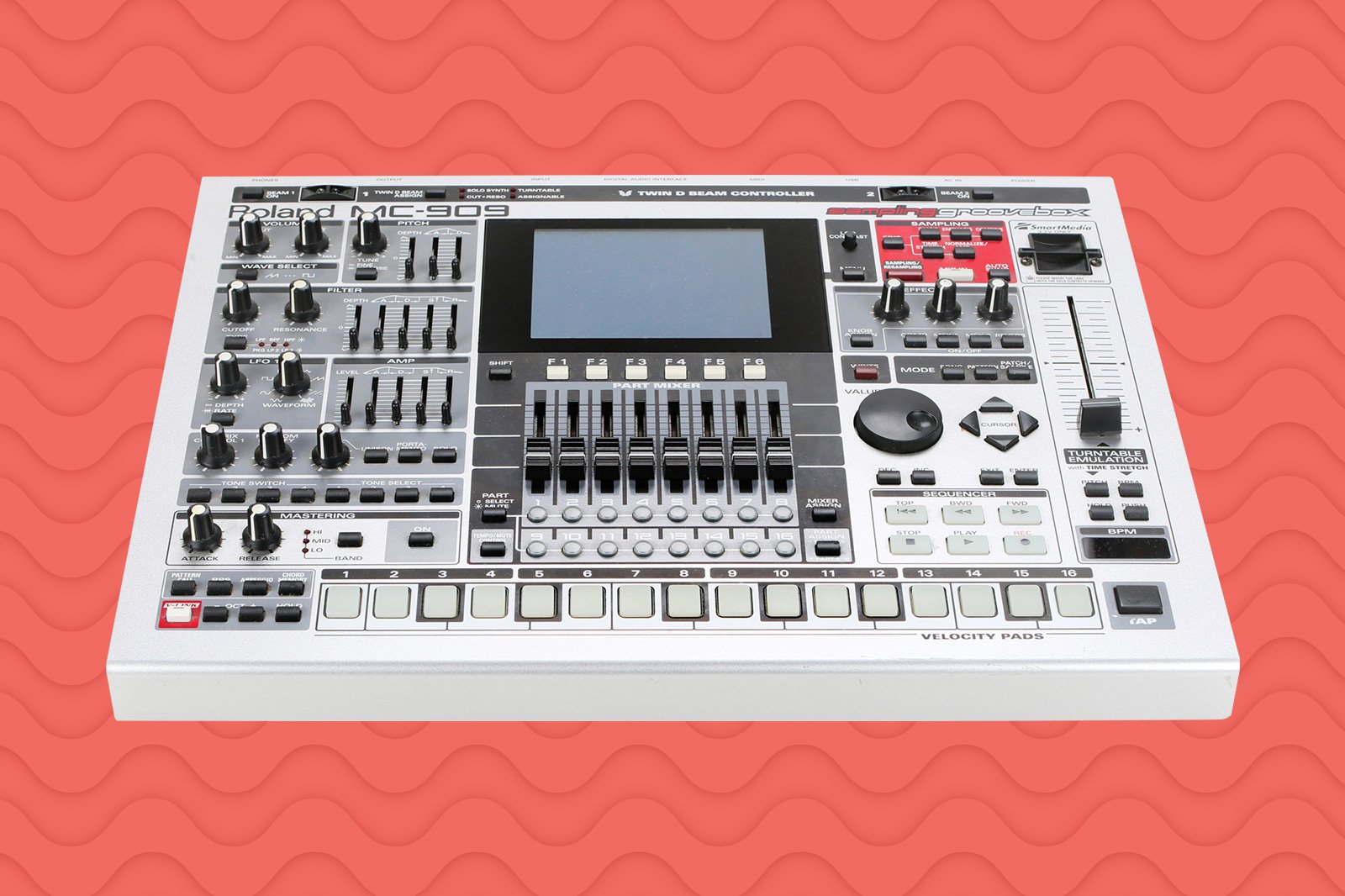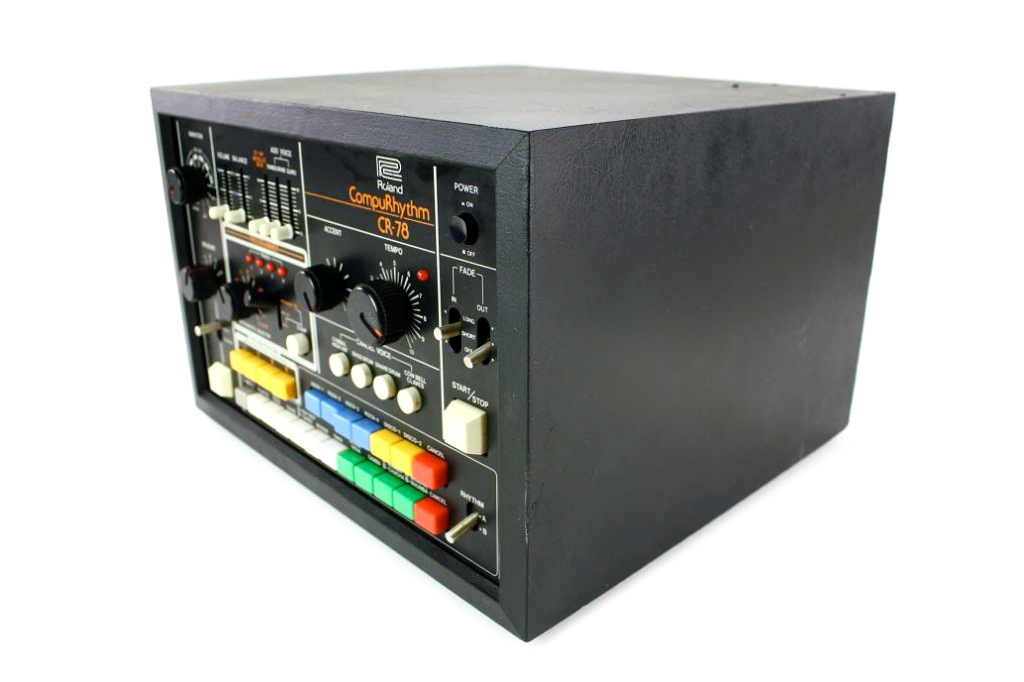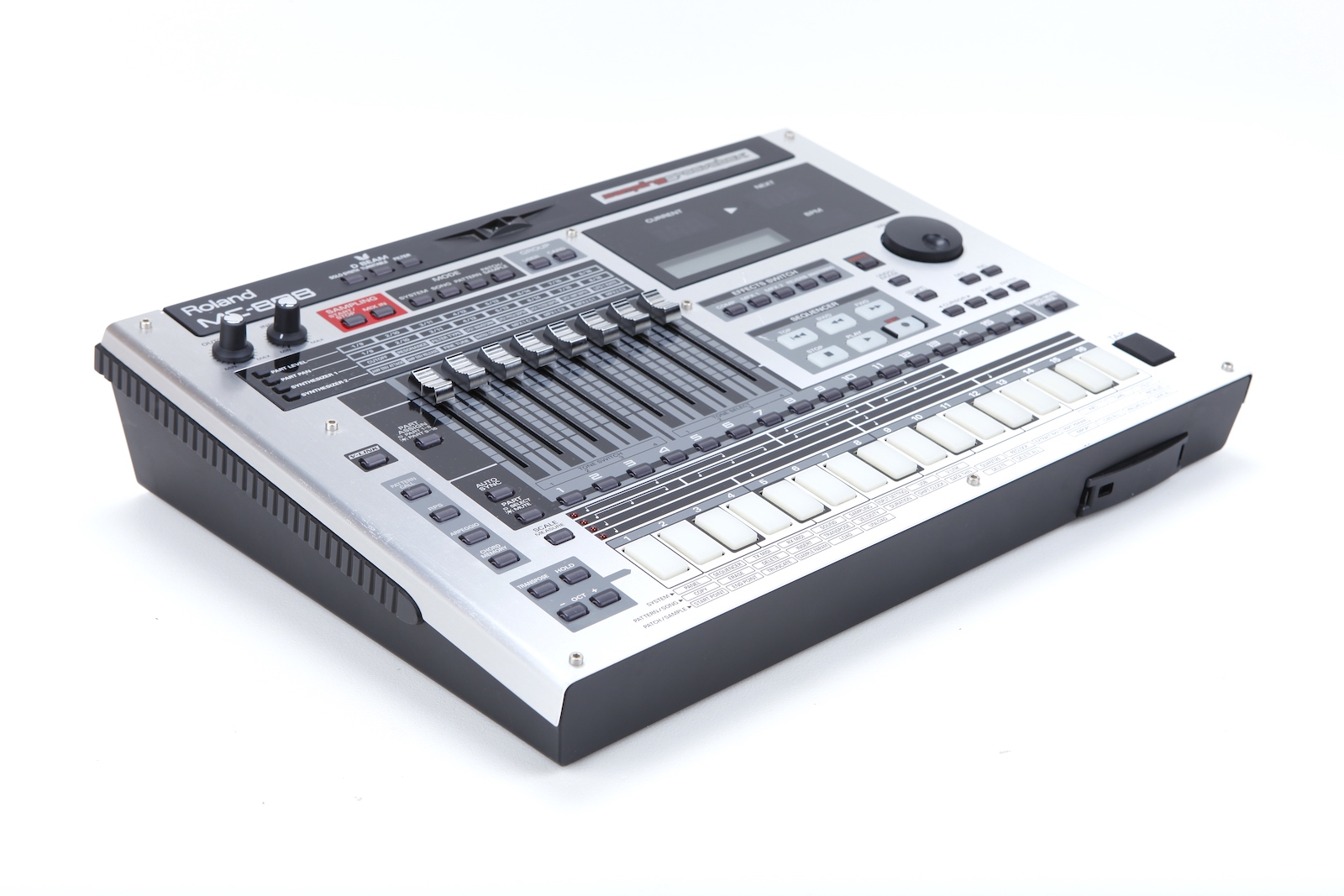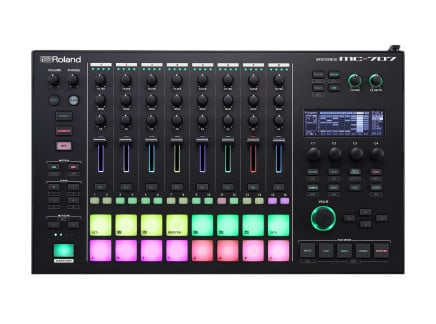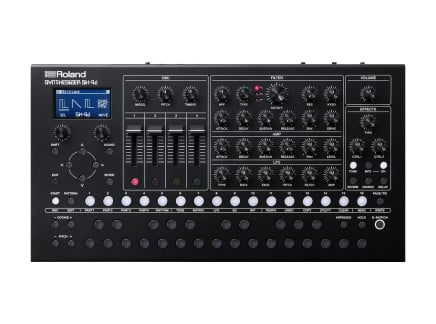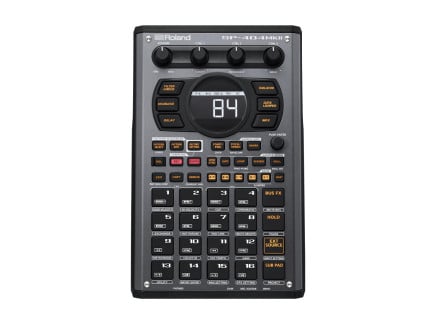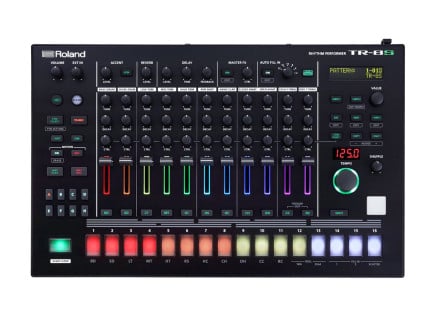If one were to ask the average musician to close their eyes and picture a drum machine, the image of a Roland made box would soon emerge from memory. From the computer-style switch caps with red LEDs and incredibly identifiable color schemes, the image of a Roland drum machine is seared into the consciousness of both the amateur and professional beat enthusiast. At this point, we’ve even had TR-series inspired sneakers and apparel.
For many, the modern MC series is what they will reach for to fashion a new track in a live or studio situation. For others, nothing beats the originals, and they stick to the vintage models. In this article, we attempt to take a walk through the past to look at the rich history of Roland drum machines and grooveboxe—and how they evolved to become what they are today.
Before the Boom Bap…
Ikutaro Kakehashi is the man behind the Roland brand and many of the early Roland drum machines we have come to know. Armed with a passion for experimenting with electronics, Kakehashi started a company called Ace Electronics. It was there that he developed a number of the ideas that would eventually lead to the more modern designs we know today.
Without going too far into detail on the boxes Kakehashi created with Ace, it's important to mention a couple that stood out as predecessors to the more modern Roland machines. After all, these are the beginnings of the early Roland drum machines.
Rhythm Ace FR-1: The FR-1 was an update to the very first R-1 model. It was notable because it added the ability to actually have the machine play itself rather than having to manually play each part of the beat by hand. See, the original R-1 Rhythm Ace model lacked automatic accompaniment—and It's important to remember that in those days a drum machine was mainly meant to accompany a musician who was playing another instrument. It just wasn’t possible to manually play the individual sounds on the R-1 while playing another instrument at the same time. So, the R-1 Rhythm Ace was a bit of a failure. On the other hand, the FR-1 had 16 preset patterns and 4 manual buttons to play the individual voices, so this model stuck a bit more with the working musician.
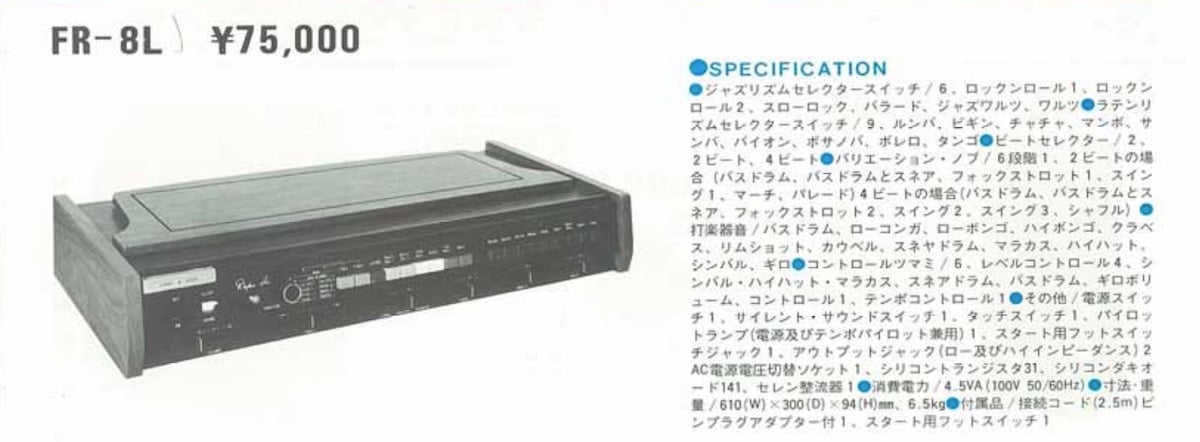
Rhythm Ace FR-8L: The FR-8L is notable because it was the last of the Ace machines and the first Roland machine in all but company name. Soon afterwards, It was basically just rebranded to be the first TR drum machine—the TR-77.
Early Roland and the Rise of the TR Series
1972 saw the founding of Roland as a company—and with it, the introduction of the TR series we know today. The TR-77 was first out of the gate, and a number of absolute classics would eventually follow. Let's take a look at a few of these.
CR-78 CompuRhythm: 1978 saw the creation of the first absolute classic Roland drum machine: the CR-78. The CR-78 was a groundbreaking machine due to its use of a microprocessor for program storage. This was a new and revolutionary technology at the time, and obviously program storage would become the norm going forward. From Blondie to Phil Collins to Hall and Oats, the CR-78 made it into all sorts of hit records and for good reason...it just sounded cool.
TR-808: The 808 is now an undisputed classic in the realm of drum machines, but most people don't realize that the 808 was actually a commercial flop when it was first released. At the time, everyone wanted drums to sound “real” as electronic music wasn’t yet a mainstream genre. As it is recognized today, the TR-808 is a crowning achievement of boomy kicks, snappy snares and...cowbell?!?! (We all know that cowbell.)
Hip-hop and rap from the '80s to the current day would not be the same without the sound of the 808 rattling our speakers and blowing out our subwoofers. From its early days with Afrika Bambaataa to Kanye West naming an album after it, the 808 is a monster among monsters in the Roland timeline.
TR-606 Drumatix: The 606 was like the more portable and cheaper little brother of the 808 without some of the editable bells and whistles on individual sounds. It could store up to 32 patterns and 8 songs, and patterns could be chained together. The TR-606 was meant to be used in conjunction with the TB-303 Bass line synthesizer (synced via DIN on the back), but it certainly works just fine on its own.
One very important factor in considering the 606 is its ability to switch between write mode and play mode without affecting the playback of the machine as it ran. This is unique among the Roland boxes at the time because it made it playable in a live situation. This is also likely part of the reason it eventually became popular with artists like Aphex Twin and Autechre. It sounded great, but you could also play it live—which obviously makes things a lot less repetitive. Also, in the opinion of this writer...those hats are some of the best ever in a drum machine.
TB-303 Bass Line: The TB-303 isn't a drum machine—it's a bass synthesizer with an integrated (and quite peculiar) sequencer. As mentioned above, it was originally meant to be used alongside the TR-606. Its squelchy acid basslines cut right through a mix due to its biting top end. Ultimately, the 303 was widely adopted in the Chicago house, acid house, and techno scenes. The 303 is another machine that initially was a flop but went on to attain legendary status due to its seemingly endless list of admirers.
TR-909 Rhythm Composer: The next bonafide classic to come around was the TR-909. The 909 was to dance music what the 808 was to hip hop. It was also notable for being the first analog/digital hybrid machine in the Roland line. The Hats and Cymbals were sample-based, where the rest was analog.
The sequencer allowed for chaining up to 96 patterns and allowed users to program flams into the individual hits. The kick was super punchy, and almost seemed tailor made for the big speakers of the club. Another important note as it is relevant to today...the 909 actually had MIDI and obviously that makes it a little easier to integrate into a studio in 2023. Finally, there is that shuffle—there's something magical about that shuffle.
TR-707 Rhythm Composer & TR-727 Rhythm Composer: The 707 and the 727 are very similar machines, but the 727 is voiced to be geared more towards latin music. The machines consist of sampled sounds at 12 bits and hold 64 patterns. Where most digital machines did away with sliders for volume on instrument groups, these machines kept them so things remained performative for live scenarios.
Synthesizer Progenitors of the Groovebox Concept
SH-101: The SH-101 is another classic in the early Roland line. It is a single-oscillator synthesizer with some neat additions for user control over it live; and it was available in some zippy colors! Instead of a mod wheel which would normally accompany a keyboard based synthesizer, it has a strange little pitch bender that could control not only pitch bending but also filter cutoff and even the amount of the LFO being applied if the bender is pushed up rather than left or right.
MC-202: The MC-202 predates Rolands use of the “MC” prefix for their groovebox series by quite a while. In this case, "MC" stands for "micro composer," its name a reference to Roland sequencers such as the MC-4 and MC-8. This little beasty is pretty much an SH-101 with a much more complex sequencer setup. Hence the reference to the sequencers that came before in the name.
In the MC-202 we see Roland combining ideas from multiple machines like the SH-101, MC-8, even the TB-303 into one machine—and thus signaling the way to the later MC series machines and their "all-in-one-box" ideal.
The Birth of the "Groovebox"
The 1990s MC series finally brought the idea of the groovebox to the public—in fact, it was here that Roland actually coined the term "groovebox." These early MC machines operated around the idea of a rompler—sample based instruments that do not actually record audio, but do have the ability to shape internal samples like one would shape a waveform in a synthesizer. ("Rompler" is a portmanteau of "ROM"/"Read Only Memory" and "Sampler.)

Before going any further, let's briefly discuss the idea of the groovebox and what it means. A groovebox is a portable, self-contained instrument that is meant for the creation of live, typically loop-based music. In the modern day, the idea of the all-in-one workstation is one that we take for granted. In fact, most electronic music creators have something that can fill this role in some form or another at home. However, when Roland coined the term "groovebox," this was not the case.
According to some, in order for a machine to be considered a groovebox it has to contain three elements. First, there has to be a sound source. That could be a sample-based sound source, a synthesizer, or a drum machine. Second, it must contain a sequencer of some sort. The machine needs to be able to run on its own. Third, typically there has to be some sort of control surface for manipulating the sound in real time. This normally consists of a display along with knobs, sliders & buttons. This is to allow the user to interact with the sounds coming out of the machine as the sequencer is running. In the current day, it's also typical to consider a "groovebox" to be a device capable of creating multiple sequenced timbres simultaneously—allowing you to craft multi-track compositions all on a single instrument.
Although there are predecessors to the Roland MC series that contained many of these elements (the Synthi AKS, for one, and many others), the term "groovebox" was something that Roland created and introduced with the MC series. It's even possible to see that Roland themselves did it (MC-202) before they came up with the term “groovebox”. However, this is where Roland took their work with the TR and TB machines and pushed it into the future of the all in one workstation.
But now, let's look at some of the models of the MC series.
The '90s + '00s Roland MC Series Grooveboxes
MC-303: The MC-303 is the first of the MC series, and draws on the sampled sounds of a number of past machines. The MC-303 also has a low pass filter and a set of basic digital effects. Perhaps the greatest draw of the MC-303 though came in the form of its eight-track sequencer, which allowed the user to send MIDI out to control other machines or have other machines control the internal sound engine of the 303.
The MC-303 certainly wasn’t the most graceful groovebox, but its flexibility laid the groundwork for many of the improvements that Roland would make in future versions.
MC-505: The 505 was the successor of the 303 and added a few notable features. First off was the D-Beam controller, which allowed for hands-free modulation. Second was the MEGAMix function which allowed for mixing of different beats and patterns in real time. This added a dynamic in live situations that was previously unattainable.
MC-909: In 2002, Roland introduced the MC-909. The MC-909 has a number of upgrades from the MC-505, including a better and broader range of effects and a larger selection of available sounds. However, the biggest difference here is the ability of the user to add samples. Samples can be recorded directly into the machine or added via USB. This obviously contributes to a more personalized experience when using the groovebox.
The MC-909 also had not one, but two D-Beam controllers, and a variety of built-in controls for altering sound. Even in the current day, it's actually a quite impressive machine.
MC-808: The MC-808 arrived in 2006, and would be the last of the Roland MC grooveboxes for a while to come. This model included double the polyphony from the MC-909 (now 128 note) and motorized faders. The 808 was actually cheaper than the 909, but did have a couple of features that were recognized as downgrades. In particular, it had a less flexible LCD display, and required USB connection to a computer for full patch editing.
Into the Future
With the 2019 arrival of the MC-707 and the MC-101, Roland has returned to the grooveboxes of old but with some big upgrades and all around more playable machines.
MC-707: With the MC-707, Roland introduces the Zen-Core Synthesis System. This system combines Roland's work in virtual analog and modeling with modern PCM. One interesting feature of the Zen-Core System is that the user can now actually share sounds across multiple instruments or even with a friend. This allows for an ever evolving palette of sound.
The MC-707 includes tons of sounds from vintage Roland gear and a nice selection of effects to make them jump. The model includes bigger playable pads, knobs, faders and a friendly interface to navigate all the goodies inside. The sampling is also more in depth, with the ability to thoroughly edit in the box. The 707 is leaps and bounds closer to the idea of the production one stop the MC series was created to be.
MC-101: The 101 is undoubtedly the smaller sibling of the 707. The full scope of sounds and effects that are on the MC-707 are also on the MC-101 but with half the tracks. So what is the point of the 101 then? Portability! The MC-101 can operate on four AA batteries and is much smaller, so those looking to travel but still create can easily slip the 101 in a bag and go.
Obviously this means there are a few compromises, and these mostly come in the form of simultaneous controls available on the front. The 101s front panel either gives you access to one parameter from each track at a time, or is focussed on the parameters from a single track. A number of the deeper functions will also undoubtedly be a little more menu intensive than on the 707 but are still available.
Out of the Past
With all the advancements of technology and updated interfaces, we live in a new golden age for music equipment. The creative possibility in the modern Roland grooveboxes is staggering, and the uses are only limited by the imagination of the person using them. After all, you can have the sounds from ten Roland machines in one small box that fits in a backpack. Crazy! However, even with all of that considered, the prices and desire for vintage Roland gear are still climbing year by year.
So...why is that?
Well for one, the originals seem to have something sonically special that's hard to define. Those old and aged analog circuits are just a little inconsistent at this point, and even if the new machines get emulation 99% right, it's just impossible to be exact when the thing being copied isn’t exact in and of itself. Sometimes those old machines just seem to be perfectly imperfect. On the other hand, the infinite possibility of some of the more modern boxes can be a bit much for someone looking for something simple. In this case, the limitation of the older boxes may actually be appealing.
There is also something to be said for the simple and immediately playable layouts on those old machines. Familiarity with an old TR series machine is like sitting around with an old friend and having a connection that is at once deeply personal and in the moment.
In an increasingly complicated world, sometimes it's best to hit “start” and let it rip on those old computer keyboard style buttons in front of you. Or perhaps you need a little more in depth control and the all in one solution of a groovebox. Either way, different eras of Roland machines have different strengths and weaknesses. What suits you is up to—well, YOU—but that's the fun of it all, isn’t it?

